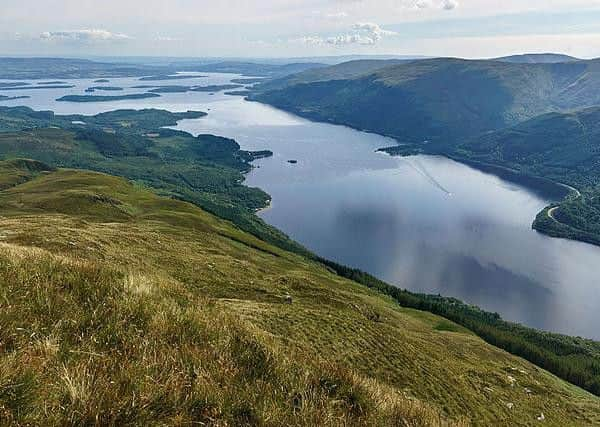The Battle of Glen Fruin: The day 200 clansmen were slaughtered near Loch Lomond
The aftermath of the clash, which was supposedly fought on a large flat piece of ground near Auchingaich, was just as punishing.
It launched an unprecedented campaign against the MacGregors, led by the King, with the name banned in Scotland for a total of 150 years.


Advertisement
Hide AdAdvertisement
Hide AdThe two clans had history. Clan Gregor, which was stripped of much of its land by Robert the Bruce , frequently raided their neighbour’s property.
Tradition dictates that the battle was sparked after two MacGregor men were refused shelter on Colquhoun land and resorted to sleeping in an outhouse and slaughtering a sheep.
After being discovered by the Laird of Luss, they were sentenced to death with their kinsmen mobilising in furious response.
However, some believe this version of events has been fancified over the years with no evidence that the executions occurred.
Others have argued that the Battle of Glen Fruin began with just another MacGregor raid.
But on Feb 7, 1603, the the Colquhouns were ready to protect themselves with permission granted by James VI to pursue their foes.
The Colquhoun ranks were swelled by men from Dumbarton and Cardross, with the clan marching into the glen with as many as 500 men on foot and 300 on horseback.
Clan Gregor had around 350 men ready to fight and showed no mercy for their foes.
Advertisement
Hide AdAdvertisement
Hide AdThe MacGregors, gathered on a hillside, launched a surprise attack on the Colquhouns which drove them back into the trap of a second force, who were assembled and waiting for them in Auchengeich Glen."
Some say 140 Colquhouns and their allies were killed although some say the figure was closer to 200.
Following the bloodshed, James VI, in a bid to dismantle the clan, forced MacGregors - and Gregors - to drop their name or risk punishment by death.
“The severity of the laws under which the MacGregors were at this time suffering, is unparalleled,” wrote R.R McIan in The Clans of the Scottish Highlands.
A royal warrant was signed by James VI on February 24, 1603, accusing the MacGregors of attacking members of Clan Colquhoun at Glen Fruin “without pitie or compassion” or regard for young or old.
Their deeds were “barbarous and horrible” with this “wicked and unhappy” race to be “exterminat and ruttit out”.
Less than two months later, around April 3, James VI ruled the name MacGregor should be “altogether abolished” and that all people of the clan should renounce their name and take another, under the pain of death.
Aliases, including Grant, Stewart and Ramsay were used.
Around a year later, Alastair of Glenstrae and 11 leading clan figures were hung at the Mercat Cross in Edinburgh, with the leader hoisted above his men before being drawn and quartered
Advertisement
Hide AdAdvertisement
Hide AdThe MacGregor name was restored in 1661 by Charles II but disallowed once more in 1693 by William of Orange.
It was not till 1784 that the MacGregors were allowed to resume their own name, and were restored to all the rights and privileges of British citizens.
